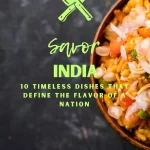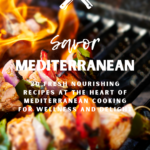Hawaiian cuisine is a living legacy of Pacific Islander heritage. Dishes like Kalua pig and palusami mirror the islands’ history of cultural fusion. From the smoky richness of imu-roasted pork to the tangy sweetness of lomi lomi salmon, these recipes are more than meals—they’re stories of resilience and aloha.
Explore how Hawaiian side dishes and cookbook recipes make global cuisine inspirations accessible. They bridge ancient traditions with modern kitchens. Whether mastering imu techniques or experimenting with poi, these dishes celebrate the harmony of tradition and innovation.

Key Takeaways
- Hawaiian cooking merges Polynesian, Asian, and international recipes for a vibrant culinary identity.
- Iconic dishes like Kalua pig and poke bowls honor ancestral methods while inspiring global cuisine inspirations.
- Cookbooks and authentic Italian pasta dishes at home can adapt island flavors to mainland kitchens.
- Ingredients like taro, coconut, and fresh seafood highlight the islands’ bounty and sustainability.
- Understanding imu techniques or poi preparation connects home cooks to centuries of Hawaiian culinary wisdom.
The Rich Cultural Tapestry of Hawaiian Cuisine
Hawaiian cuisine is a mix of traditions that show strength and unity. At its heart, Polynesian foundations laid the groundwork for early cooking, like the earth oven imu. Ingredients like taro, coconut, and sweet potato are still key today. They’re found in dishes like poi and laulau, linking today’s cooks to their ancestors.
Multicultural influences changed these roots into the plate lunch. It mixed Japanese, Filipino, and Portuguese flavors. Think of fresh lomi lomi salmon or kalua pork—these are Hawaiian classics born from global tastes. These international recipes show how migration enriched Hawaiian food with new ideas, like soy-marinated fish and golden doughnuts.
The aloha spirit is in every bite. Sharing meals is more than just eating—it’s about building community. Even simple dishes, like coconut stews or poke salads, show aloha’s spirit of caring for others. By trying these delicious international dishes, we connect with centuries of food stories.
- Polynesian staples: Taro, imu-roasted proteins, and seafood
- Multicultural additions: Rice, Spam, and global spice blends
- Aloha’s influence: Seasonal ingredients, shared meals, and respect for nature
Cooking these dishes is more than just about taste—it’s a way to connect with history. Whether making a global cuisine inspirations-style poke bowl or trying taro, each dish tells a story of strength and unity. Let’s keep these traditions alive by exploring them with curiosity and respect.
Understanding the Core Ingredients in Traditional Hawaiian Dishes
Hawaiian cooking is all about a few key ingredients. These staples have been around for centuries. They’re still important today, in both old and new kitchens. Let’s explore these essentials to make authentic Hawaiian dishes at home.
Staple starches are the heart of Hawaiian meals. Taro, the base of poi, adds a rich flavor. Breadfruit (ulu) and sweet potatoes are also key, offering nutrients and versatility. Try them in dishes like breadfruit salads or roasted sweet potatoes with coconut milk.
Proteins in Hawaii come from the sea and land. Fresh fish like ahi tuna is perfect for poke bowls. Pork from an imu (underground oven) adds a smoky taste. For healthier options, choose lean fish or chicken for lighter dishes.
- Fruits & vegetables: Bananas, coconuts, and greens like kï add sweetness and texture. Coconut milk makes soups and desserts like haupia creamy. Tropical fruits balance out savory dishes.
- Seasonings: Use Hawaiian sea salt (paʻakai) and roasted kukui nuts for depth. Fresh herbs like noni leaves add a unique aroma.

Mainland cooks can find substitutes for these ingredients. Use arrowroot or cornstarch for desserts, or fresh basil for hard-to-find herbs. These ingredients help make meals that are not only traditional but also healthy. Try baked taro chips instead of fried foods or use lean fish in poke bowls for a lighter meal.
By using these ingredients, you connect with Hawaii’s culinary history. Whether making easy weeknight meals or hosting a luau, these staples ensure your dishes honor both tradition and modern tastes.
Poi: The Sacred Staple of Hawaiian Meals
Poi is at the heart of Hawaiian tradition. It’s made from taro root and has been a staple for centuries. The process of making poi is both an art and a ritual, filled with cultural meaning.
How Poi is Traditionally Prepared
To make traditional poi, taro root is steamed or baked. Then, it’s pounded into a smooth paste with a stone tool. Water is added gradually. This turns its flavor from sweet to tangy as it ages.
This process shows the knowledge passed down through generations. It’s a family tradition.
| Consistency | Description |
|---|---|
| One-Finger Poi | Thick, ideal for spreading or shaping into balls |
| Two-Finger Poi | Medium thickness, popular for scooping with fingers |
| Three-Finger Poi | Thinner, often used in soups or sauces |
Nutritional Benefits of This Ancient Food
Poi is a healthy gluten-free dessert idea and more. It’s full of complex carbs, fiber, and vitamins like C and B-1. It’s also low in fat and gluten-free, making it great for many diets.
Modern chefs love it for quick & easy cooking with the kitchen foodie. They even mix it into easy vegan breakfast ideas. This shows how poi can adapt to new recipes without losing its tradition.
Modern Interpretations of Poi in Contemporary Cooking
Chefs today are getting creative with poi. They use it in baked goods, smoothies, and as a base for explore global recipes at the kitchen foodie. For inspiration, check out this guide on poi’s history and recipes.
Whether enjoyed the traditional way or in new recipes, poi connects the past to the present.
Kalua Pig: The Heart of Hawaiian Feasts
Kalua pig is a comfort food like no other. It’s more than a meal; it’s a celebration of Hawaiian culture and community. The pork is slow-cooked in an underground oven, wrapped in banana leaves, and steamed over hot stones for hours. This makes the meat tender and flavorful, defining Hawaiian dinner recipes that are worth sharing.

Adapting this ancient method for modern kitchens is easier than you think. Start with pork shoulder, a cut similar to the traditional pork butt. Season it with Hawaiian sea salt and liquid smoke for that authentic taste. Then, slow-cook it in a Dutch oven or pressure cooker. You can use parchment paper instead of banana leaves to get that earthy flavor.
- Traditional: Cooked in an imu for 6–8 hours
- Modern: Use a slow cooker for 8 hours on low
- Pro tip: Let the meat rest before shredding for maximum tenderness
Enjoy your Kalua pork with chive-lime rice or in tacos. For a complete feast, add Mom’s Mac Salad and steamed bok choy. For more ideas, check out this Kalua pork recipe and these comfort food favorites.
| Traditional Method | Modern Adaptation |
|---|---|
| Imu pit cooking | Slow cooker or oven |
| Banana leaves | Parchment paper |
| Hours-long process | 8–10 hours cooking time |
Kalua pig brings aloha to any gathering, whether it’s a luau or a cozy dinner. It shows us that ancient dishes can evolve, keeping tradition alive in our modern lives.
Lomi Lomi Salmon: A Refreshing Hawaiian Side Dish
Lomi Lomi salmon is a favorite for its bright flavors and easy preparation. It’s a staple at gatherings and everyday meals. The name “Lomi Lomi” means “to massage,” showing how the ingredients are mixed together.
This dish is a perfect example of Hawaiian cooking. It takes global ingredients and turns them into something uniquely Hawaiian.
The Origin Story Behind This Beloved Dish
Lomi Lomi salmon started with the arrival of salted salmon from Western sailors. Hawaiian cooks mixed it with local tomatoes and onions. They massaged the ingredients together, creating a dish that blends tradition with new flavors.
For tips on making Lomi Lomi, check out this resource.
Step-by-Step Guide to Making Authentic Lomi Lomi
Here’s how to make the perfect Lomi Lomi:
| Ingredients | Quantity |
|---|---|
| Salted salmon | ½ lb (desalted if fresh) |
| Tomatoes | 2 medium, diced |
| Onions | 1 large, finely chopped |
| Green onions | 3–6 stalks |
- Prepare salmon: Rinse and desalt if needed.
- Cut all ingredients into bite-sized pieces.
- Massage ingredients gently in a bowl until combined.
- Chill for an hour before serving.
Pro tip: Use sweet onions instead of white onions for a milder taste. Leftovers can be stored in the fridge for up to 3 days.
Perfect Pairings with Other Hawaiian Foods
Try Lomi Lomi with taro rolls for a nice texture contrast. It also pairs well with kalua pork for a balanced meal. With only 153 calories per serving, it’s a great choice for healthy dinner recipes.
For a colorful presentation, serve it on lettuce leaves or with steamed rice. Check out savannah ryan’s best recipe cookbook collection for different twists, like adding lime juice or jalapeno. This dish captures the essence of aloha—simple, nourishing, and full of shared flavor.
Poke: The Hawaiian Raw Fish Delicacy Gone Global
From beachside snacks to trendy restaurant dishes, poke—pronounced “poh-keh”—has become a global sensation. It stays true to Hawaiian tradition. This raw fish dish, once a humble meal for fishermen, now stars in quick and affordable weeknight meals and healthy snacks worldwide. Let’s explore how to honor its heritage while adapting it for modern kitchens.

Traditional kitchen foodie recipes for poke focus on simplicity. They use fresh ahi tuna, sea salt, limu (seaweed), and kukui nuts. Today’s versions add avocado, sesame seeds, or even coconut milk, proving its versatility. Here’s how to balance old and new:
- Traditional: Marinate sushi-grade ahi with soy sauce, green onions, and inamona (roasted kukui nuts).
- Modern: Try it over rice as a breakfast idea with scrambled eggs, or top salads for protein-packed lunches.
Choosing the right fish matters. Opt for lean ahi cuts or sustainable mahi-mahi. Pair with Maui onions for mild sweetness and rehydrated hijiki seaweed for texture. Over-marinating can toughen fish, so limit to 1 hour. For an authentic touch, add crushed candlenuts—just be sure to roast them first to neutralize bitterness.
Concerned about sustainability? Explore plant-based pokes with hearts of palm or jackfruit. For inspiration, check out Oahu’s poke culture to see how locals balance tradition and innovation. Whether as a snack or a main course, poke invites creativity while respecting its ocean-to-plate heritage.
Haupia: Sweet Coconut Pudding for Dessert Lovers
Haupia is a creamy coconut pudding loved in Hawaiian celebrations. It’s gluten-free and made with just four ingredients: coconut milk, sugar, cornstarch, and water. For a detailed guide, follow our step-by-step method to make this iconic dessert. It’s perfect as cubes at luaus or layered in pies, showing its versatility.
- Mix into cookie recipes as a filling or glaze
- Pair with tropical fruits for a healthy gluten-free dessert idea
- Layer in mason jars with macadamia nuts for a no-bake treat
Try adding haupia to your brownie recipes for a sweet contrast. For dietary needs, use arrowroot or agar-agar instead of cornstarch. You can also reduce sugar with monkfruit or blend with matcha for a modern twist. Store leftovers in the fridge up to three days or freeze for later.
| Thickener | Sweetener |
|---|---|
| Cornstarch (classic) | White sugar (original) |
| Arrowroot (translucent finish) | Monkfruit (low-calorie) |
| Agar-agar (vegan) | Coconut sugar (natural) |
Haupia is great on its own or in baking recipes. It brings tradition and innovation together. Share it at gatherings or try new recipes in your kitchen. It’s a true reflection of Hawaiian ingenuity and a perfect dessert for any meal.
Lau Lau: Slow-Cooked Bundles of Hawaiian Flavor

Learn how to make lau lau, a dish that turns simple ingredients into a beloved Hawaiian favorite. It’s wrapped in taro and ti leaves, offering a mix of earthy tastes and cultural richness. We’ll show you how to make this classic dish quick and easy for busy weeknights.
The Traditional Ti Leaf Wrapping Technique
Getting the ti leaf wrapping right is crucial for true flavor. Here’s the process:
- Start with taro leaves (luau) for the inner layer, then
- Put the protein in the middle for even cooking.
- Finish with ti leaves and tie with string for steaming.
This method adds a unique earthy taste to the meat. For a step-by-step guide, check out our online resources.
Protein Variations in Classic Lau Lau Recipes
| Protein | Tradition | Modern Twist |
|---|---|---|
| Pork | Fatty cuts like pork butt | Trim excess fat for lighter meals |
| Butterfish | Silky texture from slow steaming | Swap with cod or haddock |
| Chicken | Less common but gaining popularity | Try chicken recipes with soy-ginger marinades |
Modern Kitchen Adaptations for Mainland Cooks
Bring Hawaiian tastes home with these tips:
- Use collard or banana leaves as substitutes for ti leaves.
- Cook in an Instant Pot (1 hour) or slow cooker (4 hours).
- Pair with quick dinner ideas like steamed rice and kimchee for a balanced meal.
Try easy weeknight meals by prepping bundles ahead and freezing for later.
Every bite of lau lau shares a tale of resilience and creativity. Whether using chicken recipes or new methods, this dish connects tradition and convenience.
Authentic Hawaiian Plate Lunch: A Complete Meal Experience
The Hawaiian plate lunch is a great easy dinner idea. It’s a quick and affordable weeknight meal that everyone loves. It has two scoops of Calrose rice, a sweet macaroni salad, and a protein like teriyaki chicken or Kalua pork. It’s not just a meal; it’s a celebration of Hawaii’s culture.
“The plate lunch was born of necessity but became a symbol of unity,” says Chef Keoki Lum, a Hawaiian culinary historian. “It’s comfort food at its most inclusive.”
To make this comfort food favorite at home, just follow these steps:
- Rice: Use Calrose rice for its sticky texture, perfect for holding sauces.
- Mac salad: Mix elbow macaroni with mayo, grated carrots, and a touch of sugar for that delicious comfort food cooking tips balance.
- Protein: Choose teriyaki chicken, Spam, or mahi mahi—grilled or baked for a lighter twist.
Pair it with fresh pineapple for a sweet contrast. For health-conscious cooks, swap white rice for cauliflower rice or reduce mayo in the salad. At just 732 calories per serving, it’s a balanced indulgence. Whether for family dinners or gatherings, this meal embodies aloha spirit—simple, satisfying, and shared with everyone.
Exploring Hawaiian Luau Foods Beyond the Tourist Experience

Luau meals are more than just dinner. They tell stories of heritage and community. By learning about their origins, you can honor Hawaiian traditions and create unforgettable homemade recipes.
Traditional Hawaiian feasts, or pā’ina, show centuries of cultural wisdom. Dishes like kalua pig, slow-cooked in an imu, symbolize abundance. Poi, made from taro root, honors the land’s generosity. These dishes connect past and present, fostering connections through shared meals.
- Kalua pig: Represents communal effort and sacrifice.
- Poi: A staple linking families to ancestral farming practices.
- Lauli’i (young taro stem): Served on woven lau lau leaves to emphasize sustainability.
Hosting a luau means blending global cuisine with respect for Hawaiian values. Start by selecting dishes that highlight cultural depth:
- Choose core dishes like lomi lomi salmon or laulau pork wrapped in taro leaves.
- Include poi and poke bowls as crowd-pleasers that tell culinary stories.
- Pair meals with Kahala shave ice for a sweet finale, using organic fruit flavors like lilikoi (passionfruit).
Use taro leaf place settings and lei decorations to evoke authenticity. Invite friends to join in hula dancing or storytelling sessions, embodying the aloha spirit.
“A true luau isn’t just food—it’s sharing stories and traditions.” – Kumu Hula Kealoha, cultural educator
| Traditional Element | Homemade Substitute |
|---|---|
| Imu-cooked kalua pig | Slow-roasted pork with banana leaves |
| Taro root poi | Commercial poi mixes for beginners |
| Live hula | DIY ukulele music or video tutorials |
By prioritizing respect over replication, you transform your dinner recipes into meaningful cultural experiences. Resources like Moku Kitchen’s locally sourced ingredients can help bridge tradition and modern kitchens.
The Sweet Side of Hawaiian Cuisine: Beyond Haupia
Hawaiian desserts are a mix of cultural influences and local flavors. They range from Portuguese-inspired fried treats to refreshing frozen ones. These sweets show the islands’ history and use of local ingredients. Let’s look at three iconic desserts and how to make them at home.
These sugary donuts started with Portuguese laborers and got tropical fillings like coconut or guava. Our recipes make this treat easy to bake, with a perfect balance of crispness and softness. Try using honey instead of sugar for a healthier version—it’s good for those watching their weight.
Shave ice with syrups like lychee or pineapple is a summer favorite. Add mochi or azuki beans for extra texture. For a lighter option, use fresh fruit juices instead of syrups.
Hawaii’s abundance is seen in desserts like kulolo (taro pudding) or passionfruit bars. Our cookie recipes feature macadamia-nut shortbread crusts. Brownie recipes, like Dobash cake, mix chocolate layers with coconut.
- Coconut Taro Cake: Layers of taro, coconut, and chocolate—try our baking recipes for this festive dessert.
- Breadfruit Pies: Use ripe fruit for a natural sweetener, perfect in healthy recipes.
- Fresh Fruit Salads: Mango, papaya, and starfruit make light, vitamin-packed desserts.
These treats show Hawaiian sweets are both indulgent and creative. Check out our guides to make these flavors at home. Whether baking cookie recipes or enjoying tropical fruit mixes, there’s something for everyone.
Essential Hawaiian Cooking Techniques Every Food Enthusiast Should Know
Learning Hawaiian cooking techniques connects you to a rich culinary history. We’ll look at methods that turn simple ingredients into dishes full of island flavor:

- Imu Underground Ovens: Slow-roast proteins like pork in heated rock pits lined with banana and ti leaves. Modern adaptations use slow cookers or foil packets for home kitchens.
- Ti Leaf Wrapping: Preserve moisture by bundling fish or tofu in these sturdy leaves. Substitute parchment paper when ti leaves aren’t available.
- Fermentation Mastery:
- Poi requires taro root mashed into smooth pastes using traditional ‘oahi stone tools.
- Experiment with quick & easy cooking with the kitchen for modern takes on these methods.
- Marinating with tropical flavors: Balance soy sauce, chili peppers, and limu (seaweed) for dishes like poke bowls.
For step-by-step guide to baking sourdough bread or the kitchen foodie recipes, focus on layering techniques like proofing dough with local ingredients. Even delicious international dishes gain depth when incorporating Hawaiian methods like grilling over open flames or using coconut milk-based sauces.
Try grilling shrimp in foil with ginger-lime marinades—a nod to traditional imu cooking. When substituting ingredients, prioritize fresh produce like local greens or root vegetables. These methods turn everyday meals into cultural experiences, honoring aloha’s spirit of sharing. Start small: wrap tofu in parchment and steam for a vegetarian lau lau twist. Every technique is a bridge between past and present, making island flavors accessible to home cooks everywhere.
Sourcing Authentic Hawaiian Ingredients on the Mainland
Exploring Hawaiian dishes doesn’t mean you have to go to Hawaii. Start by using online platforms that connect you to these ingredients. Only From Hawaii makes it easy to get things like poi powder and taro flour. They offer discounts for bigger orders, and they ship fast to keep things fresh.
Look for items like HAWAII CANDY SNACKS 2 and CHAO SIAM FRIED PORK SKINS 2 to add real Hawaiian flavors and textures.
Online Resources for Hard-to Find Island Ingredients
- Platforms like Only From Hawaii work with local producers like Big Island Bees for honey and Tea Chest Hawaii for mamaki.
- Big stores like Costco or Whole Foods often have coconut milk and fish sauce. These are key for easy vegetarian dinner recipes for beginners.
Suitable Substitutions That Maintain Authentic Flavors
When you can’t find luau leaves, collard greens work well as a substitute. For seafood, try using salmon or mackerel instead of ahi tuna. Even if you’re making Authentic Italian pasta dishes at home, you can still get the flavors right. Use soy sauce made with Hawaiian sea salt for that special umami taste.
Remember, the core flavors like garlic, ginger, and chili peppers are what keep dishes true to their roots.
Health Benefits Hidden Within Traditional Hawaiian Cooking

Traditional Hawaiian cooking is more than just tasty—it’s a path to wellness. Foods like poi, made from taro, offer complex carbs and vitamins. Seafood, like ahi tuna, is full of heart-healthy omega-3s. Tropical fruits, such as papaya and mango, are rich in antioxidants without added sugars.
This mix reflects the Hawaiian idea of pono. It’s about eating in harmony with nature.
Modern meals highlight these key ingredients:
- Poi: A gut-friendly starch great for healthy snacks or easy vegan breakfast ideas.
- Seafood: Rich in lean protein for healthy dinner recipes like grilled mahi-mahi with steamed bok choy.
- Tropical greens like kale (taro leaves) add iron and fiber to salads or smoothies.
| Ingredient | Nutrient | Modern Use |
|---|---|---|
| Poi | Resistant starch, B vitamins | Blend into healthy recipes and weight loss tips for sustained energy |
| Seafood | Omega-3 fatty acids | Star in healthy dinner recipes for heart health |
| Noni fruit | Antioxidants | Enhance easy vegan breakfast ideas as a smoothie booster |
Swap processed foods for fresh fish, greens, and root veggies. Try healthy snacks like roasted sweet potatoes or seaweed strips. Even small changes, like choosing poke bowls over fried foods, honor tradition and support weight management. With kitchen foodie creativity, you can make ancestral wisdom part of your daily meals.
How Modern Chefs Are Reinventing Hawaiian Classics While Honoring Tradition
Today, chefs are making Hawaiian dishes in new ways. They add creativity while keeping cultural roots strong. Explore global recipes at the kitchen foodie to see how chefs around the world are inspired by these trends.
“Innovation happens when you dig deeper into your ancestors’ practices.” — Chef Sheldon Simeon, 2023 James Beard Award Winner
Notable Hawaiian Fusion Restaurants Worth Exploring
- Mama’s Fish House (Maui) pairs farm-to-table ingredients with dishes like lilikoi-glazed mahi-mahi
- San Francisco’s Liholiho Yacht Club offers poke bowls reimagined with global spice blends
- New York’s Noreetuh fuses Hawaiian proteins with international techniques like sous-vide kalua pork
Award-Winning Chefs Shaping the Movement
- Chef Roy Yamaguchi pioneered Hawaiian Regional Cuisine, blending local ingredients with French techniques
- Chef Monique Fiso revives pre-colonial flavors using native plants like kawakawa leaves
- Chef Sheldon Simeon’s Lil’ Lokalokos food truck reinterprets plate lunches with a modern twist
These innovators show that tradition can evolve. For home cooks, Savannah Ryan’s best recipe cookbook collection offers basic techniques for fusion. Start by adding passion fruit to your poke bowls or using banana leaves instead of ti leaves. These delicious comfort food cooking tips help you respect heritage while making new dishes. The fusion movement teaches us: cultural cuisine grows strongest when rooted in respect and curiosity.
Conclusion: Embracing the Spirit of Aloha Through Hawaiian Culinary Traditions
Hawaiian cuisine is more than just food—it’s a story of strength and togetherness. Dishes like poi, kalua pig, and shave ice hold centuries of history. They mix Polynesian roots with global tastes.
Whether making a loco moco for a quick dinner or trying poke bowls, these recipes connect the past and present.
Try international recipes like haupia or lau lau to add island flavors to your meals. Start with homemade recipes for any occasion. Try marinated poke for a snack or lomi lomi salmon as a side.
Every bite brings you closer to the aloha spirit. It’s about respecting ingredients, sharing with others, and being thankful for the land.
Attend Aloha Festivals to see traditional crafts and music. Join workshops to learn ti-leaf wrapping or taste haupia from chefs. These moments turn recipes into stories, making every meal a celebration of aloha.
Cooking Hawaiian dishes for family or a quiet night in is special. Share kalua pig or pass around poke bowls. This way, food becomes a way to connect with others.
The islands’ kitchens teach us that simple recipes can honor our heritage and build community.














